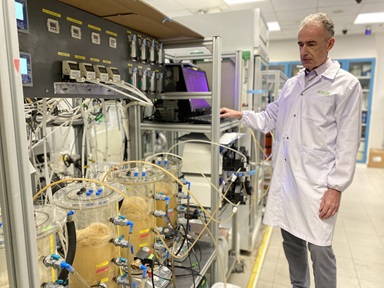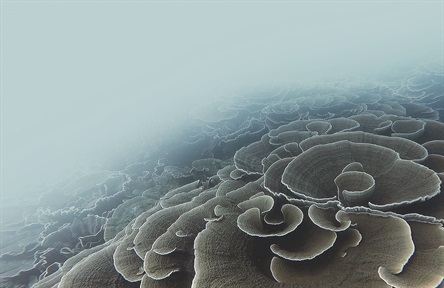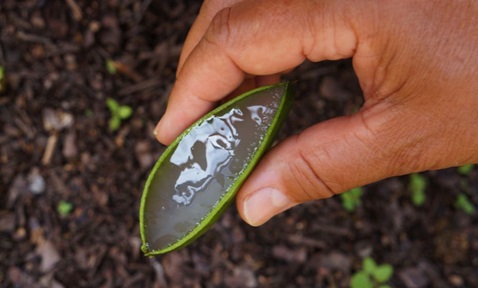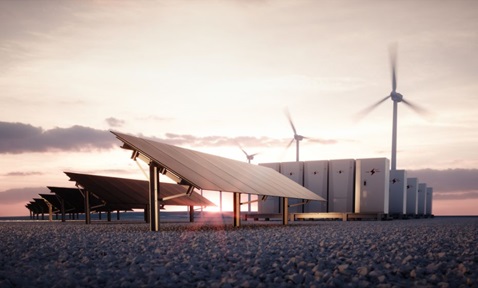
Thin-Film Composite Hollow Fiber Membranes for Oxygen Enrichment
Synopsis
This innovation introduces oxygen enrichment membranes utilising hollow fibre membrane technology to enable efficient membrane-based oxygen separation. The thin-film composite (TFC) hollow fibre membrane system provides oxygen-enriched gas production with oxygen (O₂) purity of 30-45%, operating at low pressure for cost-effective and energy-efficient industrial oxygen generation. The containerised skid system delivers 15–53 Nm³/h of OEG at 31–38% purity, offering a scalable and portable solution for a range of industries.
Opportunity
Membrane-based oxygen separation technology presents a cost-effective alternative to conventional methods such as cryogenic distillation and pressure swing adsorption (PSA) for applications requiring low to medium O₂ purity (30–40%). The pros and cons of these different technologies are summarised in the following table.
| Method | Cryogenic | PSA | Membrane |
| O2 purity | >99.9% | 80–90% | 30–40% |
| Installation cost | High | High | Low |
| Footprint | Large | Large | Small |
| Pressure | High | High pressure swing | 5 to 15 bar |
| Device size | Large | Small–Medium | Small |
This solution is particularly advantageous for industries requiring low-pressure oxygen enrichment, including healthcare, aquaculture oxygenation systems, combustion manufacturing and wellness applications. The ability to integrate seamlessly into existing infrastructure makes it a highly adaptable and competitive oxygen enrichment membrane technology.
Technology
This hollow fibre membrane technology features a polydimethylsiloxane (PDMS) selective layer applied onto a polyethersulfone (PES) substrate to enhance gas separation efficiency. The PDMS selective layer, developed using a novel formulation and applied using a flow coating technique, optimises oxygen permeability while ensuring a scalable production process.
The system comprises 20 commercial-scale four-inch-diameter, one-meter-long membrane modules, assembled into a containerised skid prototype. Operating at a 5-bar pressure, the skid delivers 15 to 53 Nm³/h of oxygen-enriched gas at a purity of 31-38%. When integrated into a downstream industrial oxygen generation system, it was able to replace over 20% of liquid oxygen consumption in a municipal solid waste gasification process, demonstrating Technology Readiness Level (TRL) 6–7 over a seven-day test period.
-the-containerised-skid-that-housed-20-pieces-of-4-inch-diameter-1-meter-long-hollow-fiber-modules-and-(b-e)-the-range-of-flowrate-and-o2-purity-capable-of-producing-by-the-prototype.jpg?sfvrsn=30cf87_1)
Figure 1: Images showing (a) the containerised skid that housed 20 pieces of 4-inch diameter, 1-meter long hollow fiber modules; and (b–e) the range of flowrate and O2 purity capable of producing by the prototype.
Applications & Advantages
Applications:
- Healthcare sector that requires medical-grade oxygen supply (30 to 40% O2 purity).
- Wellness industry such as nitrox diving, oxygen bars and training rooms.
- Combustion processes, wastewater incineration and petrochemical processes that require around 25 to 35% O2 purity.
- Enhanced aeration for recirculation aquaculture systems (RAS).
Advantages:
- Low-pressure oxygen enrichment reduces energy costs.
- Compact and modular design enables easy integration into existing setups.
- Minimal maintenance and rapid start-up for operational efficiency.
- Scalable membrane-based oxygen separation for a wide range of industries.















